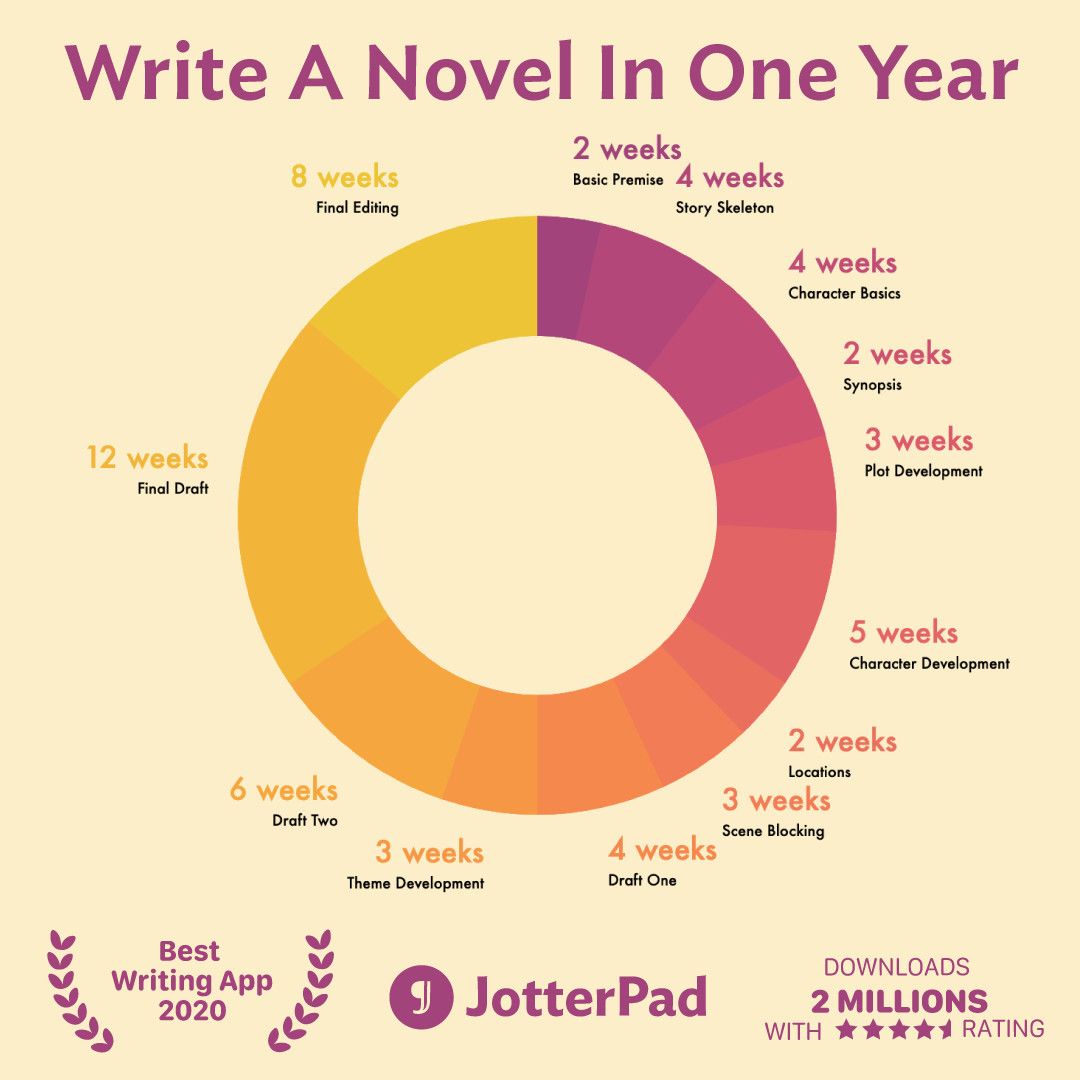7 Key Steps To Building Developed Characters
A 7-step guide to developing well-rounded and 3-dimensional characters that your readers will love and relate to.

Humans are constantly changing and growing, and so do fictional characters. In order to create a realistic and relatable character, giving them meaningful character development is key!
But what exactly do we mean by "character development"?
What exactly is character development?
Character development often takes place in "character arcs", which are moments in your story where an event or occurrence inspires change in the character. It isn't just about giving your protagonist a power-up so that they can defeat the Big Bad. It's about how their worldview, goals and motivations (just to name a few) change over the course of the story!
It's also important to note that protagonists aren't the only characters that enjoy character development. Key side characters and even antagonists can undergo character development as well!
Perhaps a great example of a well-developed character who isn't a main protagonist is Neville Longbottom from Harry Potter. He went from the timid and cowardly young boy to a brave hero in the final battle in Hogwarts, not due to any special power-ups, but because of his courage and strength!
When your key characters are all changing and evolving, your readers will feel as though they have been brought on a journey, where they get to witness how the characters evolve and eventually overcome the conflict.
That said, building a well-developed character is no easy feat. The change has to be gradual but also stay true to the character's personality, which is much easier said than done. But, as part of our One Year Novel series, we're here to give you 7 helpful tips on how you can build developed characters in your novel.

7 tips on how you can build a developed character
1. Use conflicts as catalysts of change

Photo by Piotr Makowski on Unsplash
Writers usually use conflicts to catalyze character development. This can take the form of both internal and external conflict, so let's take a look at both.
External conflict
Examples of external conflicts that your characters may face include:
- A clash with an antagonist
- Going against the environment
- Shunned by society
- Contending with supernatural forces
Here are just some ways external conflicts can help build developed characters:
- It can create trauma in a character.
- Give them a thirst for revenge
- Creates obstacles that your characters have to overcome
Internal conflict
Internal conflicts can be really interesting to write about. Your characters will undergo an internal struggle and emerge a changed person. Some example of internal conflicts include:
- Fighting their trauma
- Having to make a difficult decision
- Contending with their morality
- Dealing with self-confidence and self-image issues
It's important to remember that internal and external conflicts are not mutually exclusive! In fact, they usually go hand-in-hand. An external conflict can traumatize your main character, and they now have to work to overcome this trauma.
It is from overcoming these obstacles and conflicts that your characters will be able to grow.
2. Changing circumstances

Photo by Holly Mandarich on Unsplash
Changing circumstances can also lead to character development! It can be something as simple as moving to a different location, meeting new people and, as a result, developing a new worldview and beliefs.
A great example of this would be how Harry grows and develops once he's out of the abusive Dursley household! Once he is able to find a loving found family in the Weasleys and enter a new, magical world, Harry is able to embrace his magical side and become a more confident person.
So, as you're planning your story and character development, it's important to think about how changing environments can influence their growth.
3. An unexpected event
Sudden and unexpected events in your story can trigger change and development in your characters. A plot twist, a betrayal, a character death, a rebellion, a confession – these are just some events that can lead to character development.
Prince Zuko from Avatar: The Last Airbender is a great example of a character whose character development was catalyzed from an unexpected event. After he is betrayed and exiled by his father and sister, Prince Zuko attempts to lead a normal life at a tea shop with his uncle. Due to a series of events, however, he reluctantly joins up with Aang, and eventually fights against his sister by their side.
So, if you have an unexpected plot twist in your story, remember that this could be an excellent opportunity to build developed characters from it.
4. Look for changes in their goals and motivations
Every character in your story has their own goals and motivations, these tend to change as part of their character development. In previous steps in our One Year Series, you'll likely already have established character motivations for your protagonist, at the very least. Now, it's time to do the same for other key characters in your story, including the antagonist.
After you've done so, it's important to think about how their goals and motivations will change. Some characters might even end up with multiple motivations and goals due to events that take place in the story.
5. Show development through action and dialogue

Photo by Jakob Owens on Unsplash
There's no point in having great character development if it can't be conveyed well to the reader! Drawing on the classic adage of "show, don't tell", the best way to show readers how a character has developed is through their action and dialogue.
For example, in The Hunger Games, independent Katniss learns how to work with Peeta after some trials and tribulations. She even grows to care deeply for him, and panics when she thinks that he has died. It is through her actions and interactions that the reader can see how much she has grown.
6. Constantly refer to your character basics
Perhaps one of the hardest parts of building a well-developed character is to keep them in-character even through the changes. This can be incredibly difficult, but that is why we had you prepare some basic character sheets a few weeks ago!
Using JotterPad's cloud sync system, you can simply save all your character sheets onto a cloud service of your choice! And now, while you're building your developed characters, you can simply bring them up for reference.

And if you're someone that simply can't stand switching between tabs while you're writing, you can open up your basic character sheets on a separate device! iPad, iOS, Android... you can open up JotterPad on any screen you want!

Make sure that, despite their character development, the core of your character remains roughly the same. It's truly much easier said than done, so it's best to read widely and take a look at how other, more seasoned authors keep their characters consistent yet developed!
7. Not every character needs to be well-developed
It's important to remember that not every character needs to be well-developed. Prioritize which characters to develop more, and know which ones to leave alone. For example, you may want to focus more on building a well-developed protagonist than on developing every character equally.
This is to ensure that you do not clutter your story with character arcs for every single character in your story.
And congratulations! This is the last character-planning session in your One Year Novel challenge – that is, until you get to writing your first draft. Don't rush, pace yourself, and remember: there is no need to be perfect right off the bat!

